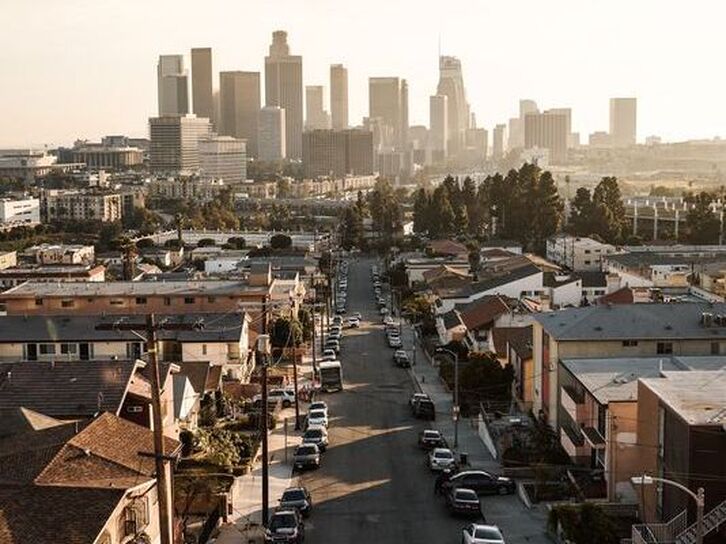|
|
Second-generation Central Americans and the formation of an ethnoracial identity in Los Angeles15/4/2020
Over 20 million immigrants from Latin America and the Spanish-speaking Caribbean arrived in the United States as part of the post-1965 immigration wave. Certainly, this migration wave had important and lasting demographic impacts in the US; in particular, it contributed to the significant growth of the Latino population. At 59 million, Latinos are the largest minority group in the US and they are projected to reach a quarter of the US population over the next few decades.
While Mexican immigrants have dominated migration flows from Latin America, Central American immigrants and their children are an important component of the post-1965 immigration wave. Central Americans arrived in the US in significant numbers during the 1980s and 1990s as a result of civil wars, political repression, economic instability and destruction caused by natural disasters in Central American countries. Today, Central Americans constitute the third largest Latino group in the US; moreover, the children of Central American immigrants who arrived during 1980s and 1990s have entered adulthood.
The magnitude and diversity of the post-1965 immigration has stimulated academic interest in immigrants’ identities, the types of group affiliations they develop, and how their self-conceptions shift over time. Much of contemporary migration and identity scholarship has focused on identifying preferred identity labels and the implications of these identities for incorporation processes. In the case of Latino groups, there is no consensus on whether ethnic or racial identities are the most salient and what these suggest about Latinos’ position in the United States’ racial landscape. Moreover, despite the important presence of Central Americans in the US for four decades, scholarship on second-generation Central Americans is lacking.
I contribute to this conversation in my Identities article, 'Second-generation Central Americans and the formation of an ethnoracial identity in Los Angeles'. This study draws on in-depth interviews conducted in Central Americans’ top US destinations to examine the identity formation of US-born and US-raised Central Americans. I pay careful attention to the various ethnic and racial identities respondents express and to the situations, experiences and reference groups that make particular identities salient. I find Central Americans have an identity repertoire that includes national-origin, panethnic, racial and minority identities. I argue Central Americans’ identity repertoire reflects a multidimensional sense of self in which ethnic and racial forms of belonging are both salient. More specifically, Central Americans’ identity repertoire captures their ethnic distinctiveness and struggle for visibility in Mexican Los Angeles, their sense of belonging to a broader Latino panethnic group, their racialised identities and experiences, and similarities and sense of solidarity with other US racial minorities. Additionally, this research demonstrates the complexity of identity formation for members of the second-generation. Specifically, it captures how identity is shaped through a dialectical process in which respondents negotiate how they see themselves with how others see them. It also demonstrates the ways in which growing up in a racialised society, institutionally created categories (i.e. Hispanic/Latino), and experiences in social institutions (i.e. schools and places of work) influence how members of the second-generation understand their place in the US ethnic and racial landscape. Overall, I contend Central Americans’ identities and identity formation experiences demonstrate a process of Latino ethnoracial group formation. My Identities article makes important contributions to conversations on migration, identity and Latinos in the US. The study’s qualitative approach allows for capturing respondents’ multiple identities, the meanings attributed to identity labels, and key identity formation experiences. In doing so, it shows ethnic and racialised belonging are not mutually exclusive; rather, ethnic, panethnic, racial and minority identities can exist simultaneously. Moreover, this study centres the experiences and voices of second-generation Central Americans – an important yet underexplored segment of the post-1965 immigration wave.
Blog post by Ariana J Valle, New York University, USA
Read the full article: Valle, Ariana J. Second-generation Central Americans and the formation of an ethnoracial identity in Los Angeles. Identities: Global Studies in Culture and Power. DOI: 10.1080/1070289X.2019.1587904
0 Comments
Your comment will be posted after it is approved.
Leave a Reply. |
|
Explore Identities at tandfonline.com/GIDE |
|
The views and opinions expressed on The Identities Blog are solely those of the original blog post authors, and not of the journal, Taylor & Francis Group or the University of Glasgow.

